MUSEUM MAP
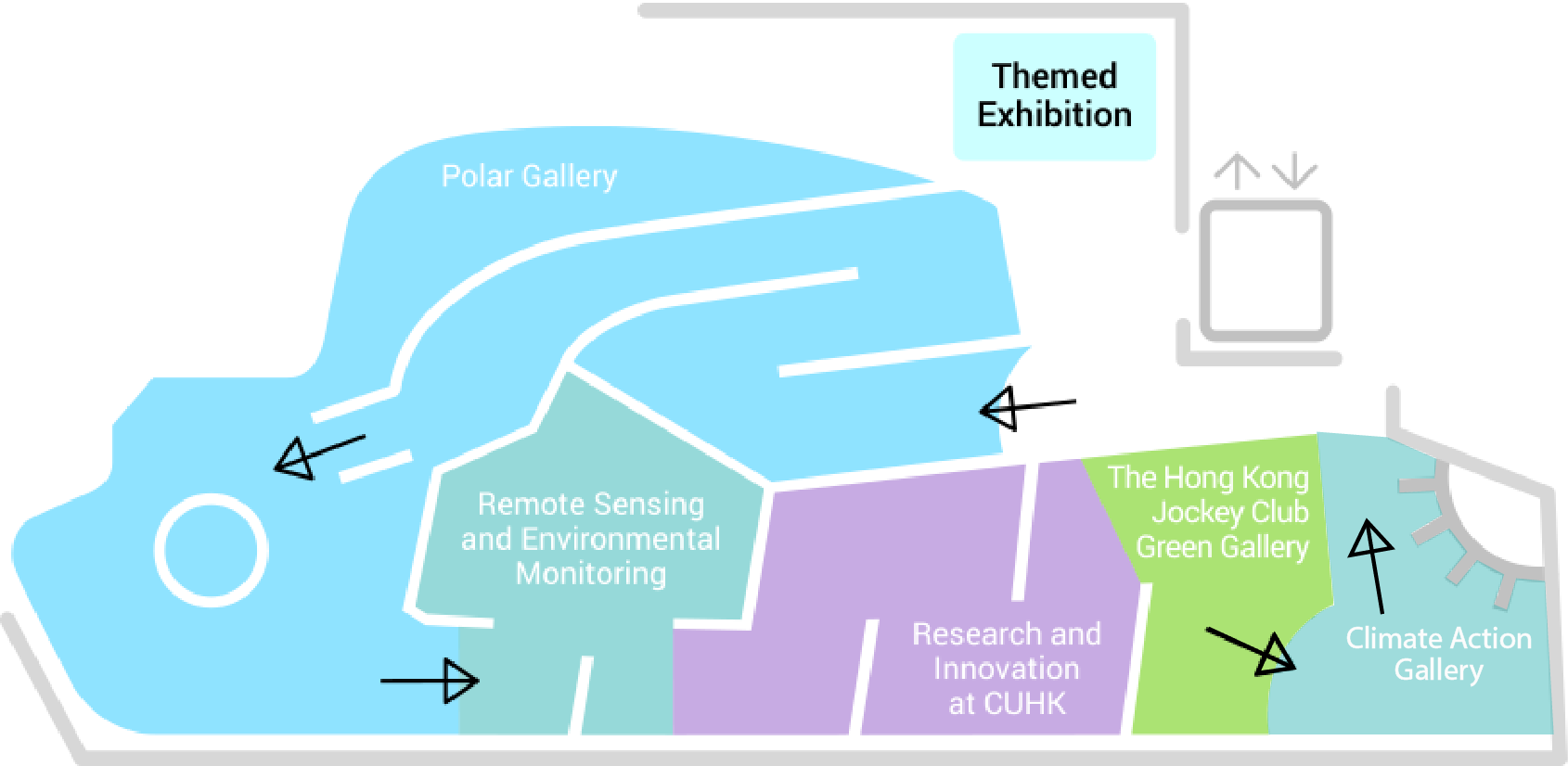
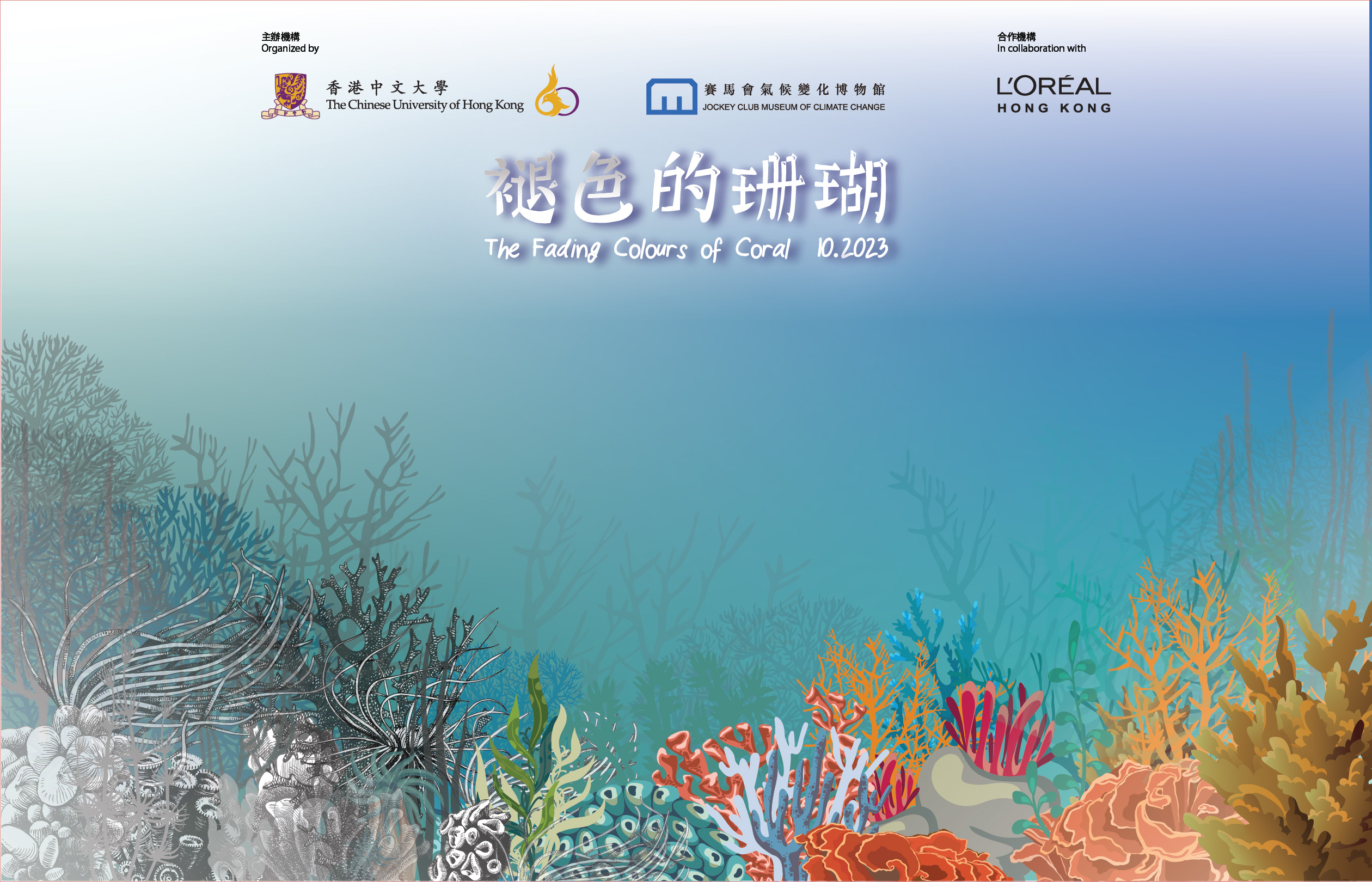
The CUHK Jockey Club Museum of Climate Change (MoCC) will launch the Mobile Exhibition “The Fading Colours of Coral” in October 2023, to showcase potential threats of climate change on marine ecology, with the aim of inspiring students to adopt new thinking and take practical action to address climate change.
Programme Details (Chinese version only)
![]()
The exhibits in this section are based on the valuable collection from Dr Rebecca Lee, the renowned environmentalist and explorer, built through her lifelong fieldwork in the "Three Poles" (the North Pole, the South Pole and Mount Everest) and network with research institutes in mainland China. This collection offers a vivid demonstration to visitors on global warming and climate change, as well as the macroscopic impacts.
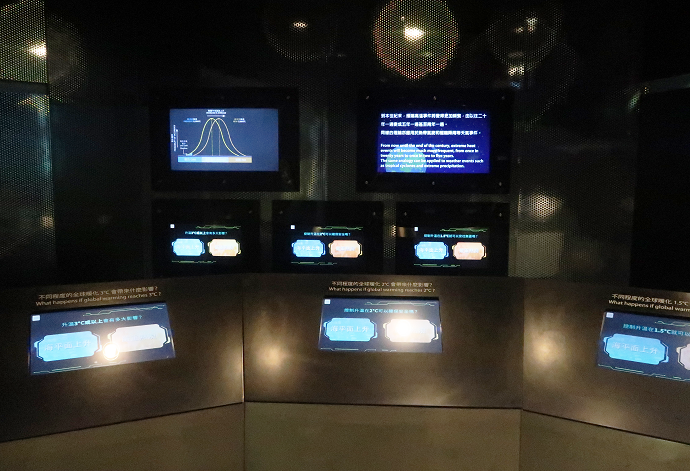
Remote Sensing and Environmental Monitoring is a collection of interactive multimedia presentation of the many types of environmental and climate information derived from Earth-orbiting satellites and other advanced technology. The visitors will be able to explore by themselves, through the application of geo-information science, how the Earth is changing in time and space and how climate change may impact the environment and their daily lives.

![]()
Research and Innovation at CUHK showcases the Chinese University’s innovative research results across a wide spectrum of environmental science and energy technology. Visitors are informed of not only the latest research developments and technological advances, but also the future potentials in these fields to combat climate change.
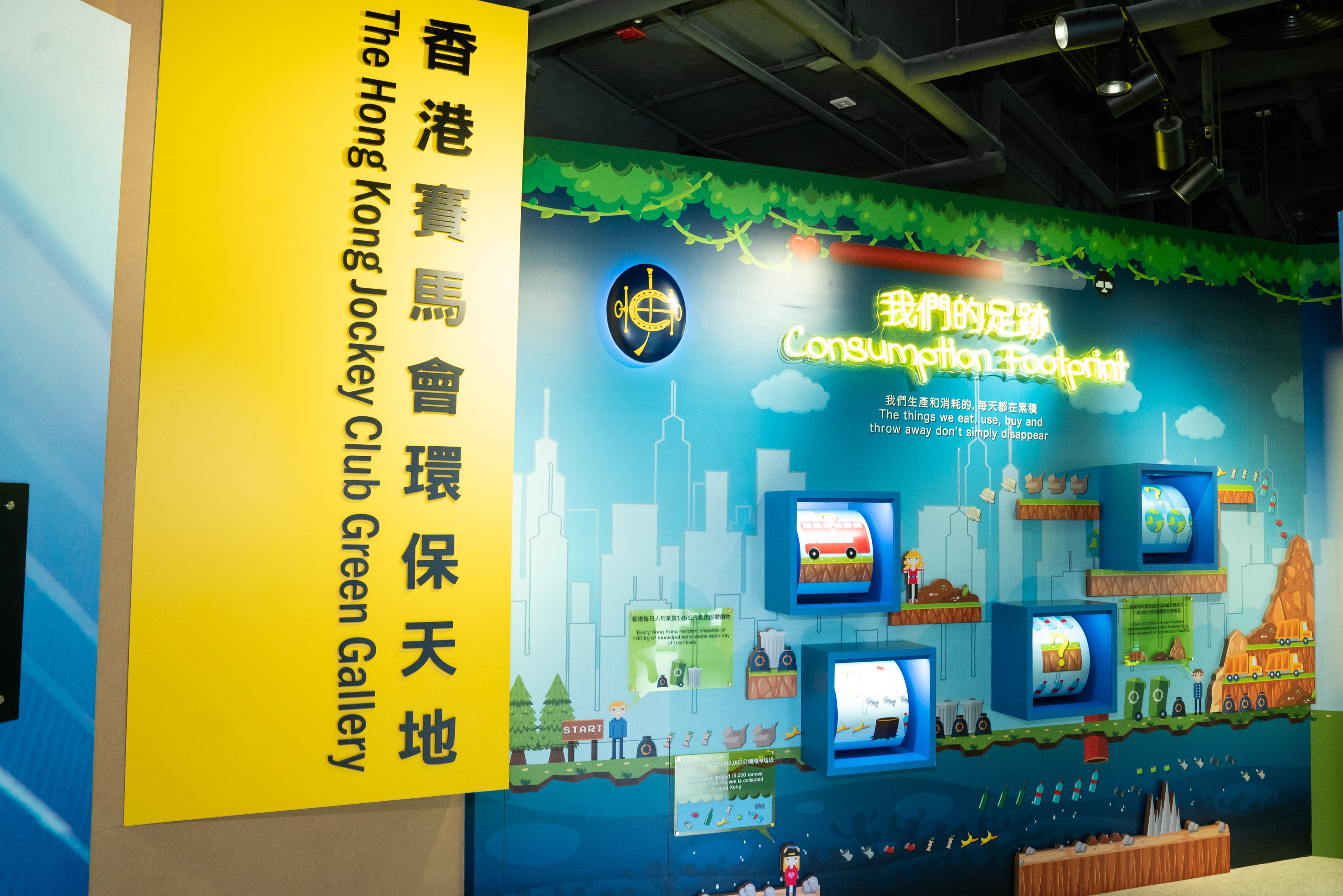
Environmental efforts require the community’s support. The Hong Kong Jockey Club Charities Trust has for years supported a significant number of projects to promote environmental protection in Hong Kong. This section presents major initiatives of the Club that have helped pioneer new thinking on how to protect the environment in the local community. With the aid of multimedia interactive exhibits, the exhibition promotes United Nations’ Sustainable Development Goal (SDG) 12 – Responsible Consumption and Production – and aims to inspire the visitors to get involved in waste-reduction action and to live a green lifestyle.
The Jockey Club Museum of Climate Change of The Chinese University of Hong Kong (hereafter "the MoCC") built the MoCC Mobile App app as a Free app. This SERVICE is provided by the MoCC at no cost and is intended for use as is.
This page is used to inform visitors regarding our policies with the collection, use, and disclosure of Personal Information if anyone decided to use our Service.
If you choose to use our Service, then you agree to the collection and use of information in relation to this policy. The Personal Information that we collect is used for providing and improving the Service. We will not use or share your information with anyone except as described in this Privacy Policy.
The terms used in this Privacy Policy have the same meanings as in our Terms and Conditions, which is accessible at Jockey Club Museum of Climate Change Mobile App unless otherwise defined in this Privacy Policy.
Information Collection and Use
For a better experience, while using our Service, we may require you to provide us with certain personally identifiable information, including but not limited to Email Address, your Domain Name Server address and the pages you have visited. The information that we request will be retained by us and used as described in this privacy policy. For the University's policy on personal data, please click here.
The app does use third party services that may collect information used to identify you.
Link to privacy policy of third party service providers used by the app
Log Data
We want to inform you that whenever you use our Service, in a case of an error in the app we collect data and information (through third party products) on your phone called Log Data. This Log Data may include information such as your device Internet Protocol (“IP”) address, device name, operating system version, the configuration of the app when utilizing our Service, the time and date of your use of the Service, and other statistics.
Cookies
Cookies are files with a small amount of data that are commonly used as anonymous unique identifiers. These are sent to your browser from the websites that you visit and are stored on your device's internal memory.
This Service does not use these “cookies” explicitly. However, the app may use third party code and libraries that use “cookies” to collect information and improve their services. You have the option to either accept or refuse these cookies and know when a cookie is being sent to your device. If you choose to refuse our cookies, you may not be able to use some portions of this Service.
Service Providers
We may employ third-party companies and individuals due to the following reasons:
We want to inform users of this Service that these third parties have access to your Personal Information. The reason is to perform the tasks assigned to them on our behalf. However, they are obligated not to disclose or use the information for any other purpose.
Security
We value your trust in providing us your Personal Information, thus we are striving to use commercially acceptable means of protecting it. But remember that no method of transmission over the internet, or method of electronic storage is 100% secure and reliable, and we cannot guarantee its absolute security.
Links to Other Sites
This Service may contain links to other sites. If you click on a third-party link, you will be directed to that site. Note that these external sites are not operated by us. Therefore, we strongly advise you to review the Privacy Policy of these websites. We have no control over and assume no responsibility for the content, privacy policies, or practices of any third-party sites or services.
Changes to This Privacy Policy
We may update our Privacy Policy from time to time. Thus, you are advised to review this page periodically for any changes. We will notify you of any changes by posting the new Privacy Policy on this page. These changes are effective immediately after they are posted on this page.
Contact Us
If you have any questions or suggestions about our Privacy Policy, do not hesitate to contact us at mocc@cuhk.edu.hk.
When you use this mobile application, we will have record of your Domain Name Server address and the contents you have browsed. This information may be used by us for statistical purpose only.
Policy on Personal Data
For the University's policy on personal data, please visit http://www.cuhk.edu.hk/policy/pdo/en/
收集個人資料聲明
我們會記錄使用本手機應用程式者的域名伺服器地址和曾瀏覽的內容,此等資料僅供統計之用。
個人資料政策
有關本校處理個人資料的政策,請瀏覽http://www.cuhk.edu.hk/policy/pdo/b5/
![]()
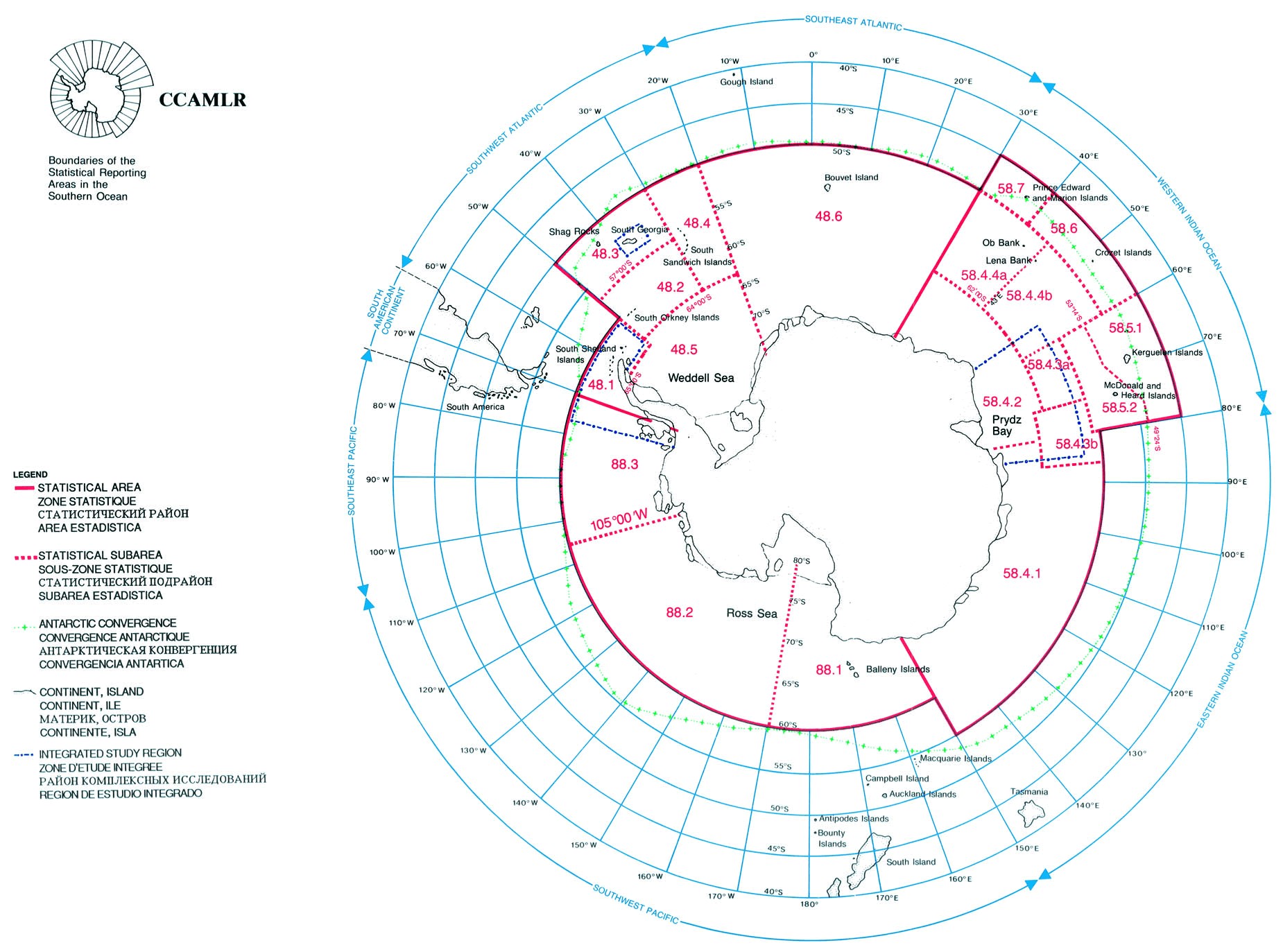
A Map showing the Convention Area described in CCAMLR (Source:www.ccamlr.org)
The Convention on the Conservation of Antarctic Marine Living Resources (‘CCAMLR’), an international convention designed to conserve Antarctic marine living resources, entered into force in 1982. The Commission for the Conservation of Antarctic Marine Living Resources (‘Commission’) was established under this convention to give effect to its objectives and principles, including regulating activities associated with the rational utilization and management of marine living resources in the Convention Area.
The Commission has adopted a suite of Conservation Measures to support the conservation of Antarctic marine living resources and the management of fisheries in the Southern Ocean. These Conservation Measures (CMs) set out the requirements related to gear specifications, data reporting, research activities and the establishment of marine protected areas.
Surrounding the continent of Antarctica, the Southern Ocean accounts for approximately 15% of the world’s ocean coverage and provides diverse habitats that support different forms of life. Although its biodiversity differs from that of other continents due to its extreme cold and dry environment, Antarctica and the Southern Ocean are home to many marine species, some of which are endemic to the continent.
Although Antarctica’s remoteness provides some protection, its biodiversity is threatened by pollution, introduced species, climate change and resources exploitation. Whales, seals and other marine creatures were first hunted in and around Antarctica in the 1790s. The emergence of large-scale fishing for finfish since the 1960s has further intensified the threat to the Southern Ocean’s marine biodiversity.
Toothfish
The preservation of the Antarctic and Patagonian toothfish (Dissostichus mawsoni and D. eleginoides), both of which are commonly found in the waters around Antarctica, is a major concern of the CCAMLR. The biological characteristics of toothfish (notably their longevity, large size, slow growth and late maturation) make them highly vulnerable to overfishing. These fishes are harvested and traded internationally. To better protect toothfish from illegal, unreported and unregulated (IUU) fishing, the Commission has introduced Conservation Measures (CMs) covering catch quotas, limits on mesh size and onboard observers for toothfish fisheries. The Commission has also adopted a CM on a Catch Documentation Scheme (CDS) to monitor the origins of the toothfish caught and the associated trading activities.
Other species
Other harvested species protected under CCAMLR include icefish and krill, which are covered by CMs specifying catch quota and requiring the presence of onboard observers. The mackerel icefish (Champsocephalus gunnari) is a benthic fish species native to the Southern Ocean. The species was heavily exploited as a seafood delicacy in the 1970s and 1980s, resulting in the closure of the fisheries in the early 1990s amid calls for sustainable fisheries management. Mackerel icefish may now only be harvested by licensed fisheries in specified areas, and only if surveys (conducted every two years) determine that sufficient stock is available..
The Antarctic krill (Euphausia superba) is the dominant species of Euphausiacea, an order of small crustaceans, and these krill are found only in the Southern Ocean. They constitute the main diet of many marine predators in the Antarctic ecosystem. Antarctic krill used to be one of the most abundant animal species on the planet, but the numbers of Antarctic krill have fluctuated in recent years due to environmental changes. The Commission aims to manage krill fishing in a precautionary manner, in order to minimize the threat to this ecosystem.
Other species such as penguins and seals are also protected under CCAMLR through the establishment of marine protected areas and the introduction of habitat management measures. Seabirds are protected from resources harvesting by gear restrictions. An ecosystem monitoring program has also been established for the several indicator species in the Antarctic ecosystem, which will obtain the necessary information to enable a sustainable harvesting and resource management strategy to be developed.
China acceded to CCAMLR in 2006, but the convention was not applied in Hong Kong as the volume of toothfish traded in Hong Kong was relatively small at that time. Although Hong Kong has no fishing vessels operating in the Convention Area, concern has arisen in recent years about the increasing volume of toothfish trade in Hong Kong.
In view of the increasing volume of the toothfish trade in Hong Kong, the Central People’s Government has agreed in principle to extend the application of CCAMLR to Hong Kong after consultation with the HKSAR Government, to protect the species from overfishing and to contribute more generally to the international effort to ensure the sustainable use of marine resources.
Domestic legislation will be enacted to provide the necessary legal basis for the implementation of CCAMLR and its CMs. After consultation with stakeholders, the HKSAR Government introduced the CAMLR Bill into the Legislative Council in July 2018. Once the bill is passed, two sets of regulations will be made. One will implement the Toothfish Catch Documentation Scheme locally, in order to regulate the trading of toothfish in Hong Kong, while the other will provide for port inspection and control of relevant vessels entering Hong Kong waters.
The implementation of the CCAMLR locally will align Hong Kong with the international effort to protect marine resources and promote their sustainable use.
For further interests, more information is available from The Antarctic of our sustainability hub.
A well-curated resources hub packed with information on environmental protection, climate change and sustainable development, and designed to inspire the public to take action to combat climate change.
